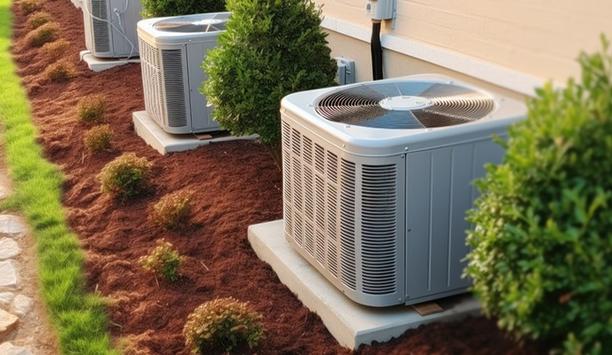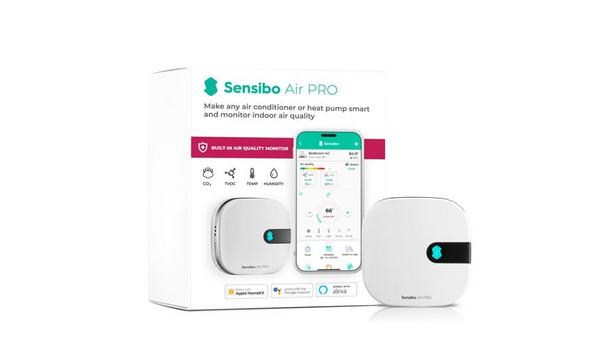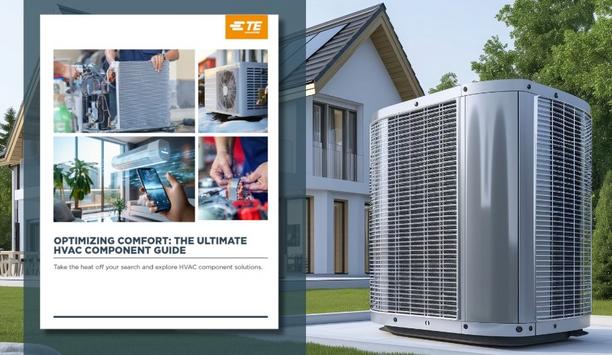Residential HVAC - Editor's Note
Hydronics systems rely on water, steam, or water solutions to distribute heating and cooling throughout a building. They are inherently more eco-friendly than conventional alternatives. First and foremost, using water as a temperature regulation method is a natural choice. There is no carbon footprint involved in its creation, and there is no inherent danger in exposure to water in the event of a system failure. Water is more efficient at carrying heating and cooling loads than other technolog...
Gaining early popularity in the 1970s, previous generations of heat pumps were only considered useful in mild climates. But today, modern heat pumps, especially variable-speed mini-split heat pumps, are reliable, sustainable, and used in various ways, including ways our parents and grandparents would never have thought of. New uses include she sheds, man caves, garages, tiny homes, sunrooms, and even boats. We spoke to Sean Gallagher, Regional Sales Manager, Eastern Massachusetts, Mitsubi...
Housecall Pro, founded in 2013, seeks to transform how home service professionals manage their businesses. Their mission to "Champion Our Pros to Success" underlies a software platform that offers scheduling, dispatching, invoicing, payment processing, payroll, and customer management solutions. artificial intelligence (AI) In addition, the “AI Team Member,” using artificial intelligence (AI), provides specialized expertise through AI-powered coaches, customer service...
TE Connectivity’s main product categories for the HVAC market are power interconnects, signal interconnects, magnet wire for motors, and heat-shrink tubing to seal against environmental factors. component materials The company works with HVAC original equipment manufacturers (OEMs) to solve challenges such as harsh environments, safety, and power and signal usage. Although components are a “small” element when an OEM assembles an HVAC system, their impact can be big. For exa...
Humidity can influence employee health and productivity in the workplace. Humidity, temperature, and ventilation all work in concert to create a healthy indoor environment that supports overall occupant well-being. “Dry indoor air can cause discomfort in the form of dry skin, eyes, and throat for staff and visitors,” says Jennifer Montville, Director of Marketing at DriSteem, a manufacturer of humidification systems. Air-related health issues “There are real costs associate...
It takes a proliferation of data centers to serve the growing computing needs of the Internet, and all those servers churning away create plenty of heat. Might some of that heat be harnessed and used for residential or commercial heating? The emergence of district heating systems, which provide thermal energy to multiple buildings from a single source, demonstrates the approach has broad possibilities. Air-cooled chillers and air-handling units used to cool data centers are like the technologi...
Recently, nine states pledged to accelerate the transition to clean buildings in their states, including a goal of deploying heat pumps to make up 65% of residential heating, cooling, and water heating by 2030. California, Colorado, Maine, Maryland, Massachusetts, New Jersey, New York, Oregon, and Rhode Island signed a memorandum of understanding in February outlining their collective efforts to accelerate the deployment of clean technologies such as heat pumps in new and existing homes. ...
The idea of Energy as a Service involves shifting the traditional business model from selling energy as a commodity to providing a comprehensive package of goods and services to address a customer’s energy use and management. Rather than selling energy, the approach encompasses complete stewardship of a company’s energy needs in exchange for a monthly fee. Because 40% or so of a company’s typical energy needs are related to heating and cooling systems, implementing Energy as...
AHR Expo 2024 was abuzz with activity, befitting a dynamic industry in the throes of change. Industry developments such as electrification and the refrigerant transition render business opportunities on the AHR Expo show floor, where exhibitors display a determination to meet the challenges and thrive in the process. Walking from booth to booth during the three-day show in Chicago, I saw the best the HVAC industry has to offer, up close and personal. Innovation and adaptability are the w...
Businesses in the HVAC market were high-profile participants at the COP28 conference in Dubai. Several big HVAC companies had a presence at the conference, and the industry’s technologies are an important tool to achieve the conference’s stated climate goal of net-zero global greenhouse gas emissions by 2050. COP28 The Conference of Parties of the United National Framework Convention on Climate Change (COP28) took place Nov. 30-Dec. 12 in Dubai. Some 35,000 people were involved in...
Revised building codes, based on model “I-Codes” developed by the International Code Council (ICC), are being widely adopted to allow A2L refrigerants to be used in comfort air conditioning applications. Previously, the use of A2L refrigerants, which are “mildly flammable,” was not allowed by building codes in force in 2021 and before because of safety concerns. benefits of A2Ls However, the benefits of using A2Ls instead of refrigerants with higher global...
Fire risks related to HVAC include factors such as overheating motors, faulty electrical wiring, and leaky fuel lines. Educating consumers on the fire risks of HVAC systems contributes to fire prevention. Proper installation and maintenance of HVAC systems can significantly reduce the dangers of factors such as gas leaks. residential fire hazards Among residential fire hazards, an HVAC system is probably not at the top of the list. However, there are fire risk factors related to HVAC t...
Esthetics have historically not been a primary consideration when it comes to HVAC vents and grilles. Rather, HVAC vents have been typically concerned with performance and ease of production, manufactured from stamped metal or extruded. “There have been limited efforts to make HVAC components that are also interior design elements,” says Mark Mascarello, Head of Design and Production of InviAir. It’s a missed opportunity. “I’m not an interior designer, but I feel...
Data-driven control of centralized home and building HVAC systems is helping to minimize energy usage, lessen sustainability concerns, and provide greater levels of comfort for lower costs. However, room air conditioners are globally the fastest growing segment, each operating independently with the aid of a remote control. How can the lessons and capabilities of data-driven control systems be applied to the world of room air conditioners? Sensibo is looking to do just that. Sensibo aims...
The steps toward building decarbonization will accelerate organizations’ net-zero journey. Taking steps will also reduce operational costs and deliver better indoor environments. Improvements in heat pumps and digital solutions have enabled these opportunities and, as they continue to advance, deeper and deeper building decarbonization will become achievable. Optimal solutions Mark Lessans, Senior Director of Sustainability and Regulatory Affairs, Johnson Controls, for insights into how...
Selling maintenance agreements are a great way to build long-term relationships with customers, increase revenue, and improve customer satisfaction. Maintenance agreements can provide a steady stream of revenue, which can be especially important during slower months. Additionally, maintenance agreements can build customer loyalty and trust. Regular maintenance optimizes the performance and lifespan of HVAC systems, prevents breakdowns, and ensures efficient operation. HVAC installers Regular...
Excessive consumption of single-use plastics and other packaging materials is an emerging concern in the HVAC market. Use of plastic and non-recyclable materials in equipment packaging is contributing to HVAC’s environmental footprint. For an industry building its future on concepts of decarbonization and the environment, seeking to minimize packaging materials is a natural concern. More HVAC manufacturers need to transition towards a more sustainable future and implement organic packagi...
In its simplest terms, artificial intelligence (AI) enables machines to mimic the operation of the human brain. Combined with the Internet of Things (IoT), AI currently has a higher profile than ever. In effect, AI is changing how we use information, analyzing massive amounts of data, and improving decision-making. The impact of AI is being felt in many industries and markets, from real-time monitoring of manufacturing processes to analyzing medical data trends to enable early detection of canc...
The building sector is a major player when it comes to lowering greenhouse gas emissions and increasing energy efficiency. High-performance buildings with very low energy consumption are key to addressing the climate and energy crisis. Passive House Standard The Passive House Standard ensures that buildings are designed to be healthy, comfortable, durable, and resilient with very low energy needs. The focus is on making use of “passive” concepts to save energy rather than needing...
From supply chain challenges to decarbonization, from data analytics to maintenance programs, the themes that ranked highest among visitors to HVACinformed.com in 2022 reflected the dominant topics of conversation throughout the industry. As demonstrated by the most-read articles on the site, technology trends and regulatory issues all converged and had a profound impact on the industry in 2022. Timely and important issues in the HVAC marketplace dominate HVACinformed.com‘s list of most-c...
The HVAC market is at an inflection point, in the throes of switching refrigerants to meet regulatory goals, improving energy efficiency to meet more stringent standards, and struggling with supply chain issues. What the industry needs is a new technology at the nexus of environmental issues and energy conservation, enabling the drive away from fossil fuels and toward zero-carbon emissions. Blue Frontier is working to bring such a system to market with a core air conditioning/energy storage tec...
The U.S. Department of Energy (DoE) has challenged manufacturers to accelerate the development of heat pumps that can perform well in colder climates. As part of its Initiative for Better Energy, Emissions, and Equity (E3 Initiative), the DoE’s Residential Cold Climate Heat Pump (CCHP) Technology Challenge seeks to demonstrate performance in the lab and at pilot sites before implementing new technologies in the market. Nominal capacity requirement To meet the DoE CCHP Challenge, a heat...
The looming deadline for HVAC compliance with new U.S. Department of Energy minimum performance requirements could cause disruptions in the construction trade as builders struggle to install existing stock and resolve other ‘logistical issues’ before time runs out. The new performance standards for all newly manufactured residential and commercial air conditioners, heat pumps and gas furnaces will take effect Jan. 1, 2023. Revised testing protocols will also apply. Supply chain di...
California is moving to ban the sale of natural gas furnaces, heaters and water heaters by 2030. It is the first US state to make the move, in order to meet federal ozone standards. In addition to California’s previous efforts to eliminate installation of gas-fueled equipment in new buildings, the new regulation will address the use of gas space heaters and water heaters in existing residential buildings. When it comes time to replace them, building owners will be required to transition...
New tax credits and rebates are poised to infuse billions of dollars into the HVAC marketplace in the United States, making a variety of high-efficiency technologies more affordable for consumers and generating additional revenue in the HVAC market for years to come. clean energy investments A new law provides Americans with access to $370 billion for clean energy investments in the form of tax credits, incentives, and rebates to improve energy efficiency. There is also a tax deduction for own...
Certification is a way to demonstrate professional knowledge, a specific skillset, and the ability to do a particular job. In the HVAC market, earning certifications provides benefits to contractors as well as technicians. Paying for certifications Historically, typically 70% of technicians paid for their certifications. Now the numbers have flipped, and about 70% of contractors currently pay for certifications because they see the value-add they can provide to keep employees with an organizat...
High outdoor temperatures are a great indicator of demand for HVAC services, and HVAC companies are feeling the heat as they struggle to meet higher demand for services even as they face unprecedented supply-chain challenges and a critically tight labor market. HVAC contractors across the country agree that demand this summer is higher than ever. The phones are ringing off the hook, and HVAC employees are working long hours just to keep up. Some are working 12-hour days and on the weekend. The...
HVAC systems account for around 46% of the average U.S. home’s energy consumption. As big users of electricity, air conditioning (AC) systems this summer face continuing concerns about an adequate supply of electricity and the reliability of the U.S. electrical grid. According to a report from the North American Electric Reliability Corporation (NERC), large parts of the country are at either ‘high’ or ‘elevated’ risk of electricity shortfalls this summer. Notably,...
Two HVAC technicians, James Lewis and Robert Shook, were among six people murdered in April 2021 by former NFL player Phillip Adams. The gunman came across the technicians outside a customer’s home in York County, S.C., shot them both, and then entered the home and killed the entire family. The tragedy is an extreme example of the dangers HVAC technicians face every day as they complete their appointed assignments. Danger is inherent whenever a technician enters a stranger’s home. H...
Demand for HVAC services spiked during the coronavirus (COVID-19) pandemic. Low interest rates, government stimulus checks and a greater emphasis on home improvement (because more people were spending time at home) drove new business for HVAC companies. However, labor shortages limited companies’ ability to meet the demand. In some cases, money was left on the table. There was another impact of the pandemic on industry labor trends: HVAC contractors kept working, even when much of the eco...
Leveraging Radiant And Hydronics To Help Achieve Decarbonization Goals
DownloadSealed Connectors In Harsh Environments
DownloadPowering And Cooling Next Generation Data Centers
DownloadDebunking Myths To Promote A Bright Future For Heat Pumps
DownloadOptimizing Comfort: The Ultimate HVAC Component Guide
Download


































